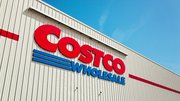Article
Top 100: 4. Smaller store formats

June 30, 2010
For many years, the march of retail was pointed in the direction of ever larger things. Stores ballooned in size and selection, and consumer behaviors changed accordingly — after all, if you could get tires and an oil change while buying eggs and diapers, you could cut out a separate trip to the mall later that afternoon. But 2008 was the year retailers took a step back, and in particular, several of the biggest names in the retail world experimented with smaller stores with a comparatively modest product selection.
Walmart, the world’s largest retailer, had already dabbled in small-format retailing with its Neighborhood Market locations, stores about one-tenth the size of a typical supercenter. Neighborhood Market stores are primarily grocery, including an emphasis on readymade meals for busy families, with a small portion of the store devoted to personal-care products and impulse buys such as new release DVDs and magazines.
Tesco’s Fresh & Easy smallfootprint concept is given much of the credit for prompting the trend toward smaller stores, but in many ways it can be seen as a natural and cyclical reaction to the "bigger is always better" mentality of previous years, one that has no doubt been helped along by the appeal of folksier retailers such as Whole Foods and The Fresh Market.
Download the complete Top 100.





